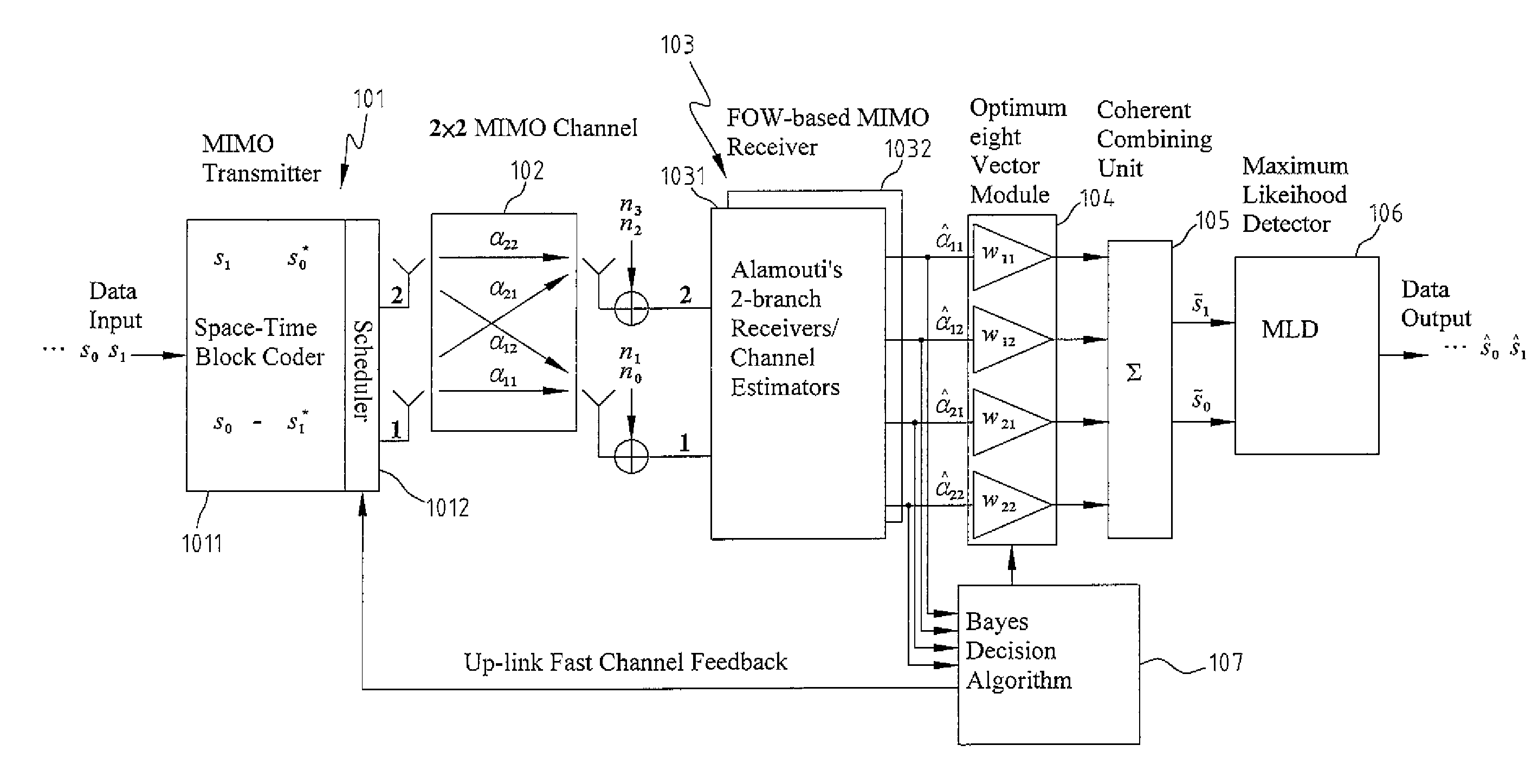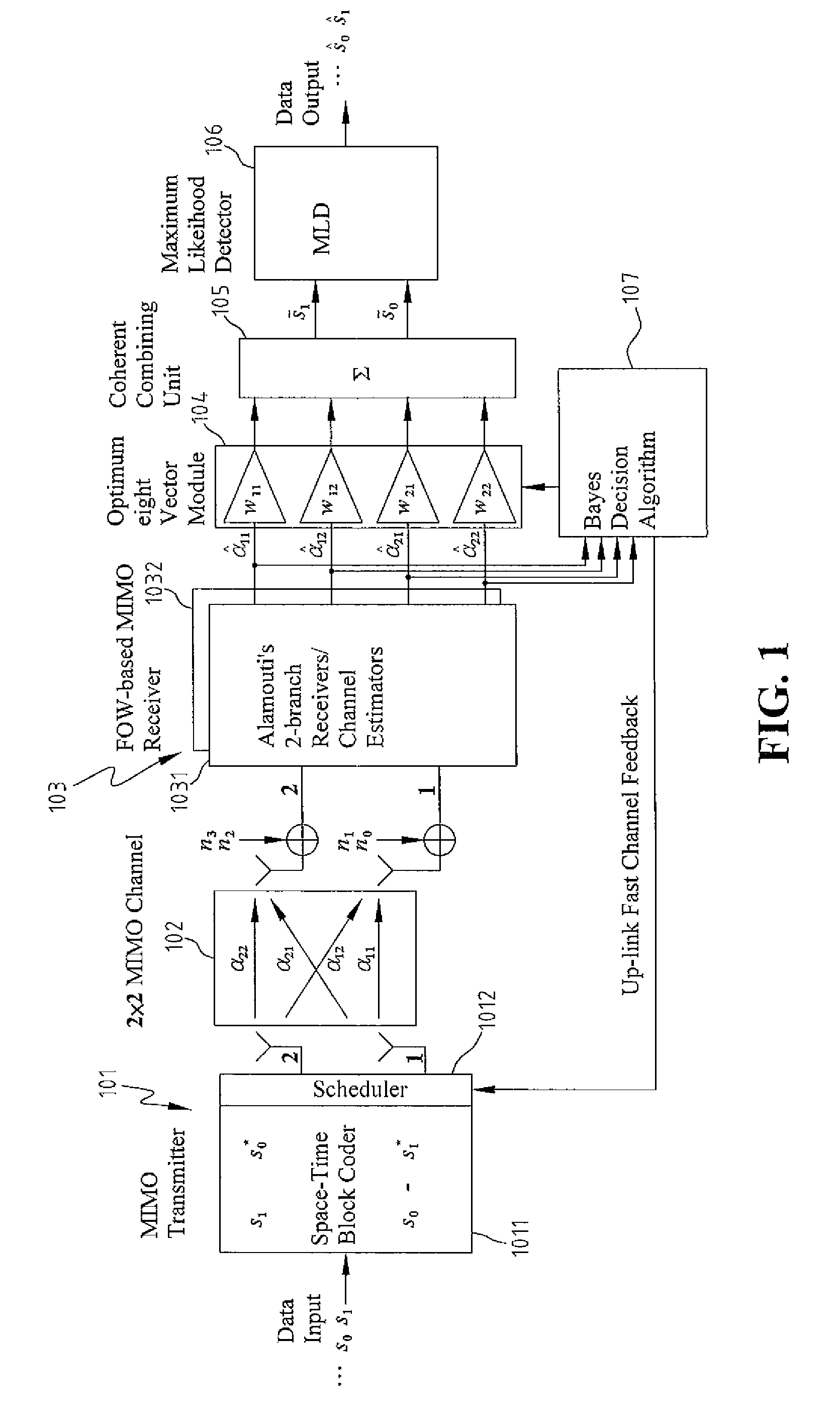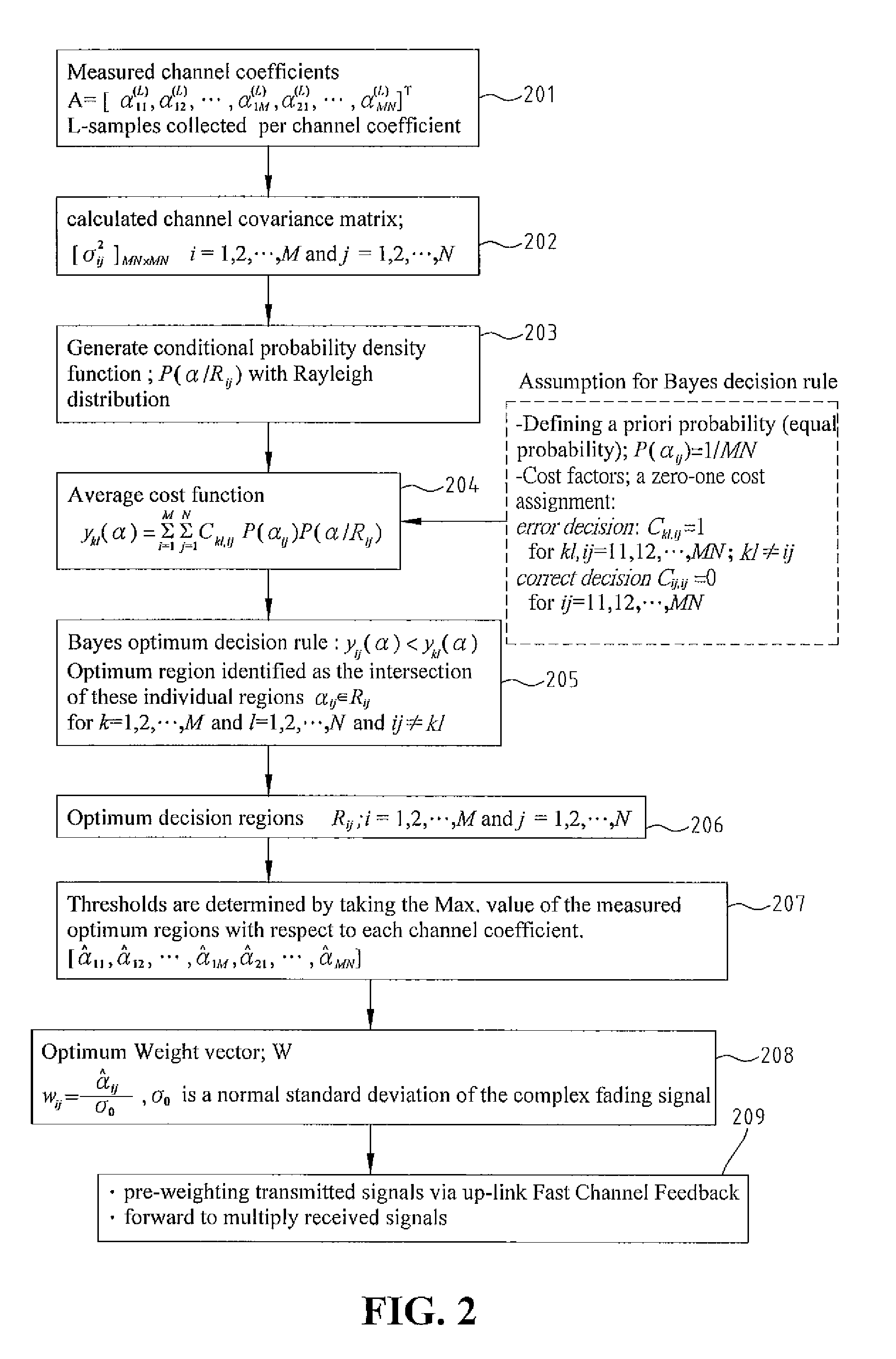Space-time MIMO wireless system based on feedback optimum weight design
a wireless system and space-time technology, applied in the field of space-time mimo broadband wireless technology, can solve the problems of mimo wireless system not using feedback optimal, overall quality of service for high-speed data transmission negatively affected, and spectral efficiency degradation, so as to improve system coverage and capacity, simple transmit diversity technique, and improve spectral efficiency
- Summary
- Abstract
- Description
- Claims
- Application Information
AI Technical Summary
Benefits of technology
Problems solved by technology
Method used
Image
Examples
Embodiment Construction
[0017]FIG. 1 shows a schematic view of a block diagram of an FOW-based 2-by-2 ST-MIMO wireless system of the present invention. As shown in FIG. 1, a MIMO wireless system in the form of a 2-by-2 Space-time MIMO (2×2 ST-MIMO) wireless system includes a MIMO transmitter 101, a 2-by-2 MIMO channel 102, two FOW-based MIMO receiver 1031, 1032, an optimum weight vector 104, a coherent combining unit 105, a maximum likelihood detector (MLD) 106, and a Bayes decision algorithm module 107. MIMO transmitter 101 further includes a space-time block coder 1011 and a scheduler 1012. The main feature of the present invention is the addition of scheduler 1012, optimum weight vector module 104, and Bayes decision algorithm module 107. Scheduler 1012 is added to MIMO transmitter 101 for receiving schedule table from Bayes decision algorithm module 107 through an uplink fast channel feedback. Optimum weight factor module 104 is placed between FOW-based MIMO receivers 1031, 1032 and coherent combining ...
PUM
 Login to View More
Login to View More Abstract
Description
Claims
Application Information
 Login to View More
Login to View More - R&D
- Intellectual Property
- Life Sciences
- Materials
- Tech Scout
- Unparalleled Data Quality
- Higher Quality Content
- 60% Fewer Hallucinations
Browse by: Latest US Patents, China's latest patents, Technical Efficacy Thesaurus, Application Domain, Technology Topic, Popular Technical Reports.
© 2025 PatSnap. All rights reserved.Legal|Privacy policy|Modern Slavery Act Transparency Statement|Sitemap|About US| Contact US: help@patsnap.com



